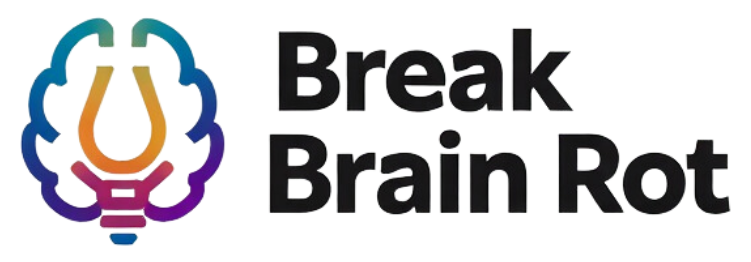Picture this: you’re lying in bed, phone in hand, promising yourself just a few more minutes online. Hours later, you’re deep in headlines about turmoil and endless bad news. This pattern is what experts call the doomscrolling addictive habit, a modern form of overconsumption that keeps you tethered to negativity. In this article, we’ll explore what doomscrolling addiction really means, how it hijacks your attention, and actionable ways to reclaim your time, focus, and peace of mind. If you’ve ever felt trapped in the cycle of scrolling yet unable to look away, this guide will show you how to finally take control and break the toxic loop once and for all.
Table of Contents
- What Is Doomscrolling and Why Do We Do It?
- The Psychology Behind Doomscrolling Addiction
- Health Consequences of the Doomscrolling Addictive Habit
- How to Break Free from Doomscrolling Addiction
- Building Healthier Digital Habits
- FAQs
- Conclusion
What Is Doomscrolling and Why Do We Do It?
Defining the Doomscrolling Addictive Habit
The term “doomscrolling” refers to the compulsion to consume endless streams of negative online content, often late at night or during downtime. This doomscrolling addictive habit thrives on our desire to stay informed and prepared, even if the constant exposure to distressing updates heightens anxiety and fatigue.
The Role of Social Media Algorithms
Social media platforms are designed to maximize engagement by showing content that triggers strong emotions. Negative or fear-based posts often receive more interactions, creating a cycle that keeps users scrolling longer. According to the American Psychological Association, this engagement model strengthens habitual scrolling behaviors rooted in emotional response rather than rational intent.
Signs You’ve Fallen Into Doomscrolling
If your mornings begin or end with endless news, or if you check social feeds whenever you feel idle, you may be experiencing symptoms of doomscrolling addiction. Other signs include restlessness, mood swings, or difficulty focusing after long bouts of scrolling. Consider exploring resources like Managing Social Media Overuse for practical guidance.
The Psychology Behind Doomscrolling Addiction
The Brain’s Reward System
Doomscrolling activates the same dopamine pathways that reinforce habits like gaming or gambling. Each new piece of alarming news refreshes the brain’s reward loop, encouraging “just one more scroll.” This reinforces the doomscrolling addictive habit through small, unpredictable information rewards that mimic addictive behaviors.
FOMO and the Need for Control
When uncertainty dominates world events, you might feel that consuming news offers a sense of control. Fear of missing out (FOMO) magnifies this need, keeping you glued to updates in hopes of feeling less anxious.
Cognitive Dissonance and Negativity Bias
Humans naturally pay more attention to negative information—a survival trait known as negativity bias. This bias, combined with cognitive dissonance, makes it difficult to disengage even when we recognize the harm. Harvard Health Publishing notes that awareness of this bias is the first step toward healthier digital habits.
Health Consequences of the Doomscrolling Addictive Habit
Mental Health Impacts
Constant exposure to distressing news can heighten anxiety, trigger depressive patterns, and increase stress hormones. Over time, the doomscrolling addiction may contribute to feelings of helplessness and cynicism about the world, eroding emotional resilience.
Physical Health Effects
Excessive scrolling disrupts sleep due to blue light exposure and anxiety. Eye strain, headaches, and sedentary posture further compound the toll. Lack of rest amplifies fatigue, fueling another session of late-night scrolling—an exhausting loop.
Productivity and Emotional Burnout
When energy and focus are drained by perpetual consumption, work performance and motivation suffer. Burnout follows, reinforcing withdrawal behaviors. To counteract this, try a personal Digital Detox Strategy designed around short, achievable screen limits.
How to Break Free from Doomscrolling Addiction
Setting Boundaries with Technology
Restoring control starts with boundaries. Use built-in smartphone tools to track screen time, set app limits, and schedule device-free periods—especially before sleep. Small adjustments, like leaving your phone outside the bedroom, can immediately reduce triggers for the doomscrolling addictive habit.
Replacing Negative Scrolling with Positive Habits
Replace doomscrolling time with fulfilling activities like reading an uplifting book, going for a walk, or trying a mindfulness app. Shifting your attention to positive stimuli helps retrain the brain toward healthier sources of reward, enhancing your digital wellness.
Seeking Professional Help
If you feel overwhelmed or unable to stop alone, talking to a therapist may help. Professionals can identify deeper emotional triggers and suggest behavioral therapies. For credible mental health resources, visit the National Institute of Mental Health.
Building Healthier Digital Habits
Creating a Balanced News Diet
Instead of cutting news out completely, aim for a balanced “news diet.” Choose reliable outlets and check updates only twice a day. This helps reduce emotional fatigue without sacrificing awareness.
Practicing Intentional Social Media Use
Curate your feeds to include positive and educational content. Mute or unfollow accounts that flood your feed with distressing updates. Learning Mindful Media Consumption encourages intentional rather than reactive engagement.
Establishing a Sustainable Routine
Start mornings with journaling or exercise instead of diving into headlines. End your day with calming rituals like reading or meditation. A consistent routine helps replace digital compulsions with stability and calm.

Frequently Asked Questions
What causes a doomscrolling addictive habit to develop?
It develops through psychological reinforcement—dopamine rewards from new information, anxiety about uncertainty, and social validation from sharing news.
Is doomscrolling addiction the same as social media addiction?
They’re related but not identical. Social media addiction involves general overuse, while doomscrolling addiction specifically centers on consuming negative or distressing news content.
Can detoxing from social media cure doomscrolling addiction?
Detoxing helps but doesn’t solve the root cause. Sustainable change requires replacing scrolling habits with mindful, fulfilling activities.
How can I tell if I’m trapped in doomscrolling?
If you feel anxious when away from your phone or find it hard to disconnect despite feeling bad afterward, you might be caught in the doomscrolling cycle.
Are there tools to help limit the doomscrolling habit?
Yes, apps like Freedom, StayFocusd, and Apple’s Screen Time can help enforce digital boundaries and reduce compulsive use.
Conclusion
The doomscrolling addictive habit thrives on fear, habit, and endless information loops. But breaking free is entirely possible. Start by recognizing your triggers, setting firm tech boundaries, and pursuing mindful alternatives that feed your well-being instead of your anxiety. Each conscious decision to put down your phone is a step closer to balance. To continue your journey toward healthier online habits, explore Overcoming Digital Burnout and rediscover the calm of intentional living. Remember, breaking the doomscrolling cycle starts with one mindful scroll.

